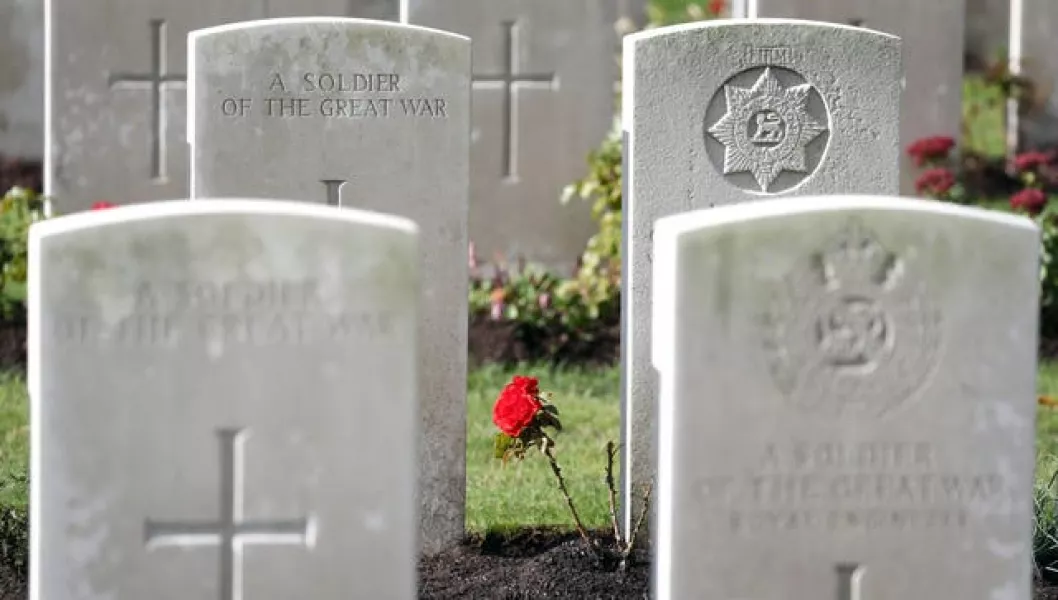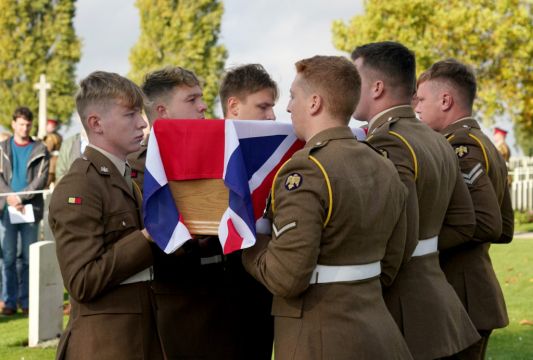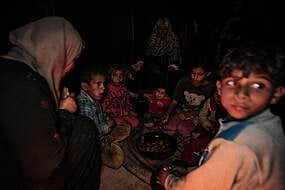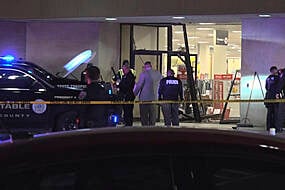It has been more than 100 years since the end of the First World War, but the bodies of those who fell on Flanders fields are still being discovered to this day.
A series of battles around the strategic Belgian town of Ypres saw hundreds of thousands of soldiers lose their lives.
And while cemeteries are filled with rows and rows of white headstones commemorating the fallen, many have never been found.
More than a century later, remains of soldiers continue to be unearthed by farmers and construction workers, a reminder that the now peaceful fields of northern France and Belgium were once scarred by trenches and gunfire.
The remains of war dead can be extremely difficult to identify, but through painstaking research and DNA evidence a dedicated team of war detectives is often able to confirm names and even trace surviving family members.
On Wednesday, Lance Corporal Robert Cook received full military honours at a ceremony near the town of Ypres as he was finally laid to rest over 100 years after his death on May 2nd, 1915.
The British soldier, born in Bishop Wilton in the East Riding of Yorkshire and one of seven children, died age 38.
His identity was confirmed by experts from the UK Ministry of Defence’s Joint Casualty and Compassionate Centre (JCCC), known as the war detectives.

Speaking to the PA news agency, JCCC Commemorations team lead Tracey Bowers said: “Our main aim is to try and identify human remains that will have recently been recovered and also to look at identification of previously buried unknown soldiers, sailors and airmen.
“I think it’s incredibly important that those that gave their lives for what we have today are remembered, honoured and afforded a full burial.”
But with so much time passed since the events of the war, and with many battlefields fought over more than once between 1914 and 1918, it can be a huge challenge to identify any remains found.
The process involves pouring over trench maps and historical research as well as studying any artefacts found that might point to the fallen soldier’s rank or regiment.
Ms Bowers added: “I think everybody thinks DNA can be used, and it solves everything, in reality it doesn’t.
“It is used by us as a confirmation of an identification.”

Getting a suitable DNA sample to compare can be difficult, with many young soldiers having lost their lives before having children.
In the case of L/Cpl Cook, experts were able to trace his surviving great nephew who agreed to provide a sample, which turned out to be a match.
Ms Bowers described getting a DNA match as “the last bit of that puzzle” after what is often more than a year of work.
Once the soldier’s remains have been identified, if a new burial is needed then the war detectives set about organising a full military honours service, including contacting the modern day equivalent of their regiment.







